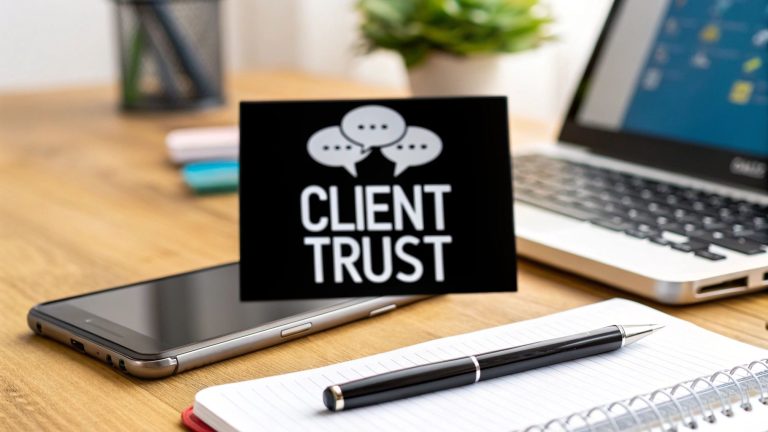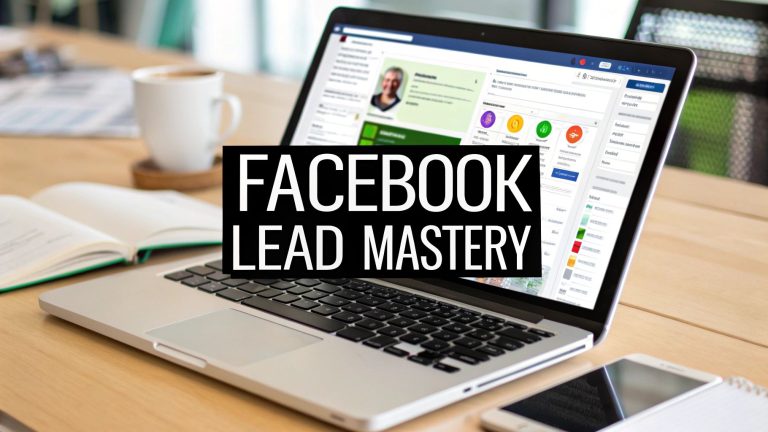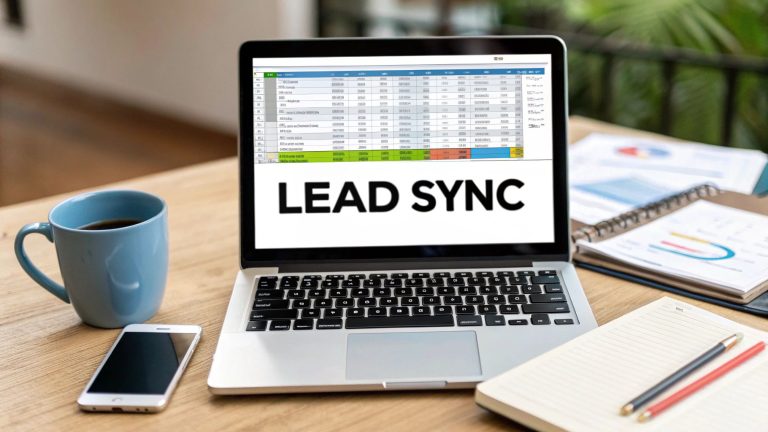10 Powerful Social Media Advertising Strategies for 2025
In 2025, simply boosting posts is no longer a viable strategy. The social media landscape is more competitive than ever, demanding sophisticated, data-driven approaches to capture attention and drive conversions. If your current ads are underperforming, it's not a sign to give up; it's a signal to get smarter. This guide moves beyond generic advice to provide a deep dive into powerful social media advertising strategies that top-performing brands use to generate real ROI.
We will break down 10 specific, actionable tactics designed for modern marketers. You will learn how to implement everything from hyper-targeted audience segmentation and dynamic retargeting campaigns to leveraging authentic user-generated content and deploying conversational chatbots. Each strategy is a blueprint for turning ad spend into measurable growth, complete with implementation tips and real-world examples.
Forget surface-level tips. This article is your roadmap to building a more effective, efficient, and profitable advertising presence. We will explore the exact methods needed to stop wasting your budget and start creating campaigns that deliver tangible results, helping you connect with the right audience and convert them into valuable leads. Let's explore the strategies that actually work.
1. Influencer Marketing Campaigns
Influencer marketing is a powerful social media advertising strategy that taps into the trust and authority of individuals with dedicated online followings. Instead of a brand directly advertising to consumers, an influencer creates authentic, relatable content featuring the product, service, or brand message. This approach leverages the established relationship between the influencer and their audience, turning a promotion into a trusted recommendation.
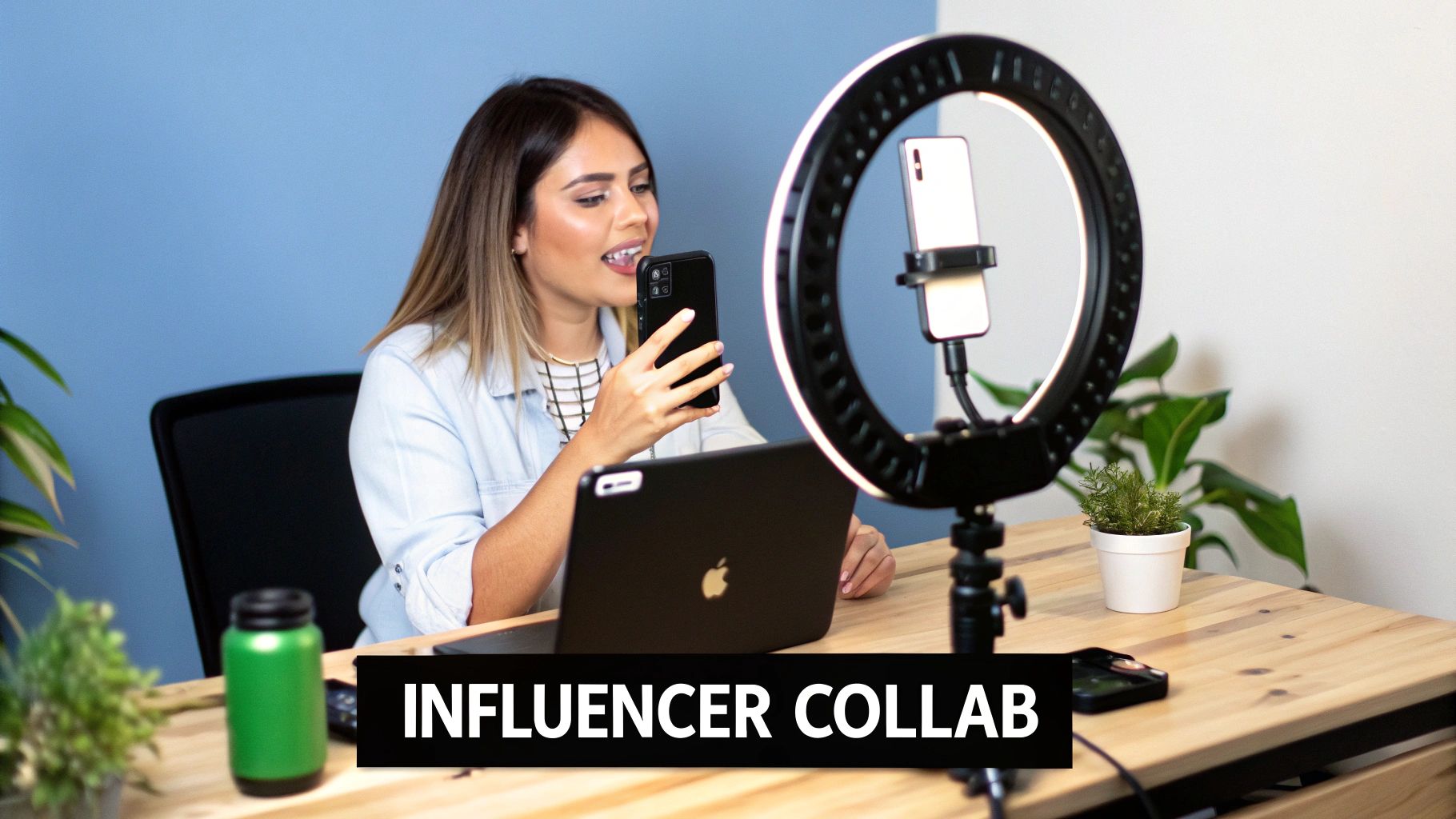
This strategy is highly effective because it cuts through the noise of traditional ads, providing social proof from a source consumers already follow and respect. For example, watchmaker Daniel Wellington famously built its brand by partnering with a wide range of Instagram fashion influencers, while Gymshark’s collaboration with fitness creators cemented its status as a billion-dollar company.
How to Implement This Strategy
To successfully launch an influencer campaign, focus on authenticity and clear goals. Prioritize influencers whose values and audience demographics align perfectly with your brand identity. It's often more effective to partner with micro-influencers (10k-100k followers) who boast higher engagement rates and a more dedicated niche audience.
Here are actionable tips for getting started:
- Prioritize Engagement Over Followers: A high follower count is meaningless without an active, engaged community. Analyze an influencer's like-to-comment ratio and the quality of audience interactions.
- Grant Creative Freedom: Provide clear brand guidelines and campaign goals, but allow the influencer to create content in their unique voice. This ensures the promotion feels genuine to their followers.
- Establish Clear Contracts: Your agreement should explicitly detail deliverables, content usage rights, timelines, and compensation to avoid any misunderstandings.
- Track ROI with Unique Codes: Use unique discount codes or trackable affiliate links for each influencer. This makes it easy to measure conversions and identify your most effective partnerships.
2. Retargeting and Remarketing Campaigns
Retargeting is a precision-focused social media advertising strategy that reconnects with users who have previously interacted with your brand but did not convert. By using tracking tools like the Meta Pixel, you can serve tailored ads to potential customers who have visited your website, viewed a product, or engaged with your content. This approach capitalizes on existing brand familiarity and user interest to guide them back toward conversion.
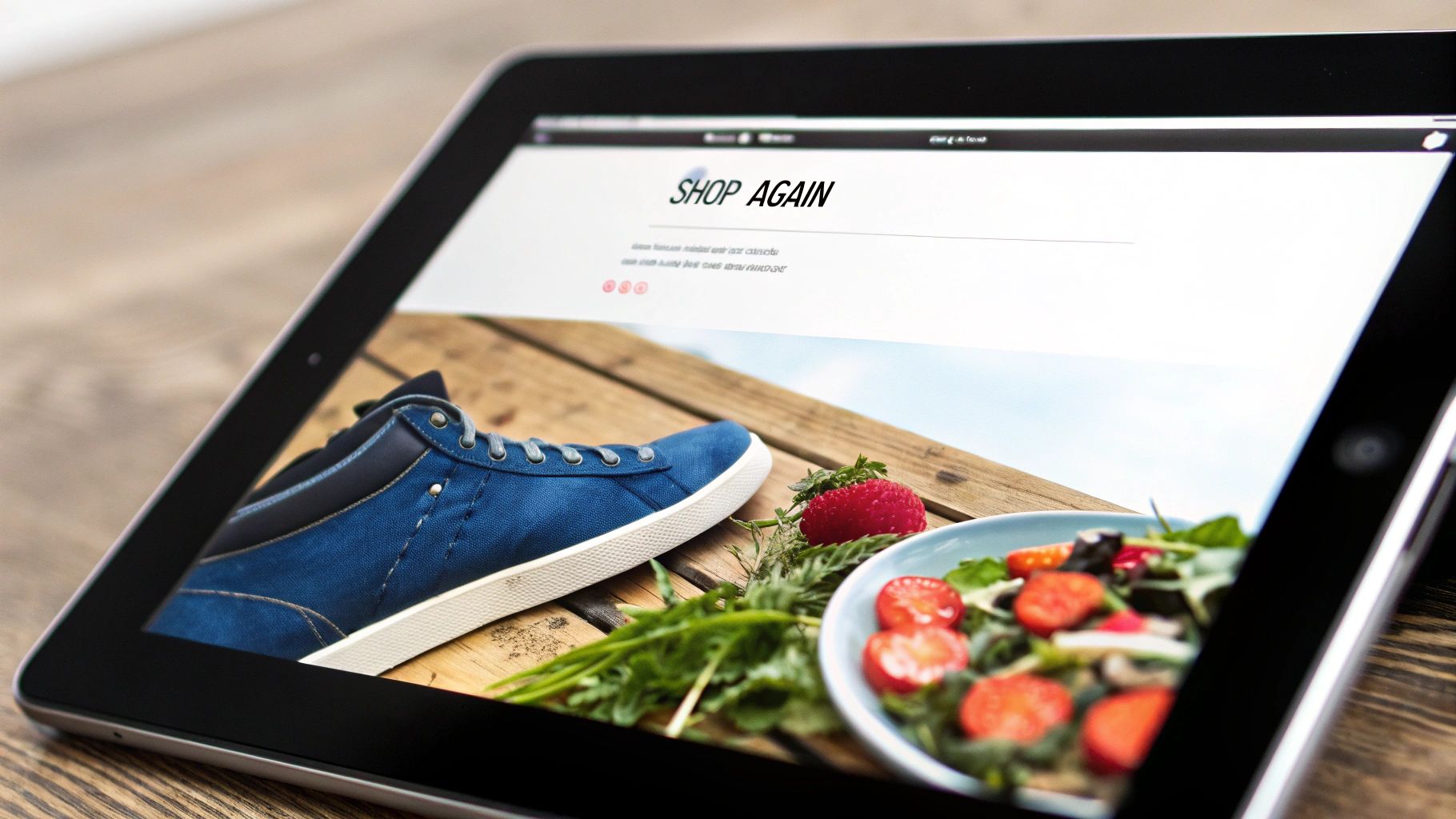
This strategy is exceptionally effective because it targets a warm audience that has already shown intent. Think of how Amazon’s dynamic ads show you recently viewed items on your Facebook feed, or how Booking.com reminds you of the exact hotels you browsed. These campaigns keep your brand top-of-mind and provide the gentle nudge needed to turn consideration into a purchase, often yielding a significantly higher return on ad spend than prospecting campaigns.
How to Implement This Strategy
A successful retargeting campaign relies on audience segmentation and timely, relevant messaging. Instead of showing the same ad to every past visitor, group users based on their specific actions. For instance, someone who abandoned their shopping cart is much closer to converting than someone who only visited your homepage. Tailoring your offer and creative to each segment is key to maximizing your results.
Here are actionable tips for getting started:
- Segment Audiences by Behavior: Create distinct audiences for different actions, like "viewed product," "added to cart," and "initiated checkout." This allows you to customize your ad copy and offers.
- Offer Incremental Incentives: Encourage deeper-funnel users to convert. You could show a general brand ad to page viewers but offer a 15% discount code specifically to cart abandoners.
- Use Frequency Caps: To avoid annoying potential customers, limit how often they see your ad. A frequency cap of 3-5 impressions per user per week is a good starting point.
- Create Dedicated Ad Creative: Don't just reuse your top-of-funnel ads. Design creative with stronger calls-to-action like "Complete Your Purchase" or "Your Items Are Waiting" to resonate with this warm audience.
3. User-Generated Content (UGC) Campaigns
User-Generated Content (UGC) campaigns are a cornerstone of modern social media advertising strategies, transforming satisfied customers into your most authentic brand advocates. This approach involves encouraging your audience to create and share content featuring your products or services, which you then leverage in your own advertising efforts. This strategy provides powerful social proof by showcasing real people enjoying your brand in genuine, unpolished ways.
This strategy builds immense trust and relatability, as consumers are far more likely to believe a peer's recommendation than a branded advertisement. Iconic examples include Apple's #ShotOniPhone campaign, which turns customer photos into stunning billboards, and GoPro's entire marketing model, which is built on thrilling customer-shot adventure videos. These campaigns generate a massive volume of free marketing assets while building a strong community.
How to Implement This Strategy
A successful UGC campaign is built on clear incentives and seamless participation. The goal is to make it easy and rewarding for your audience to share their experiences. Start by creating a unique, memorable branded hashtag and promoting it across all your channels. For those focusing on engaging event attendees, exploring effective user-generated content strategies for events can provide valuable insights into sourcing campaign content.
Here are actionable tips for getting started:
- Always Get Permission: Before repurposing customer content in paid ads, obtain explicit consent. This protects your brand legally and respects your audience.
- Incentivize Participation: Offer compelling reasons to contribute, such as contests, giveaways, discounts, or the chance to be featured on your official social media pages.
- Credit the Creator: Whenever you feature a user's content, tag and credit them in the caption. This simple act builds goodwill and encourages more submissions.
- Set Clear Guidelines: Provide simple instructions on what kind of content you're looking for, but allow for creative freedom so submissions remain authentic.
4. Video-First Content Strategy
A video-first content strategy prioritizes video as the primary medium for communication across social media platforms. This approach recognizes that dynamic, moving content generates significantly higher engagement, retention, and conversions compared to static images or text. It encompasses everything from short-form clips on TikTok and Reels to in-depth content on YouTube, all optimized for mobile viewing and platform algorithms that heavily favor video.
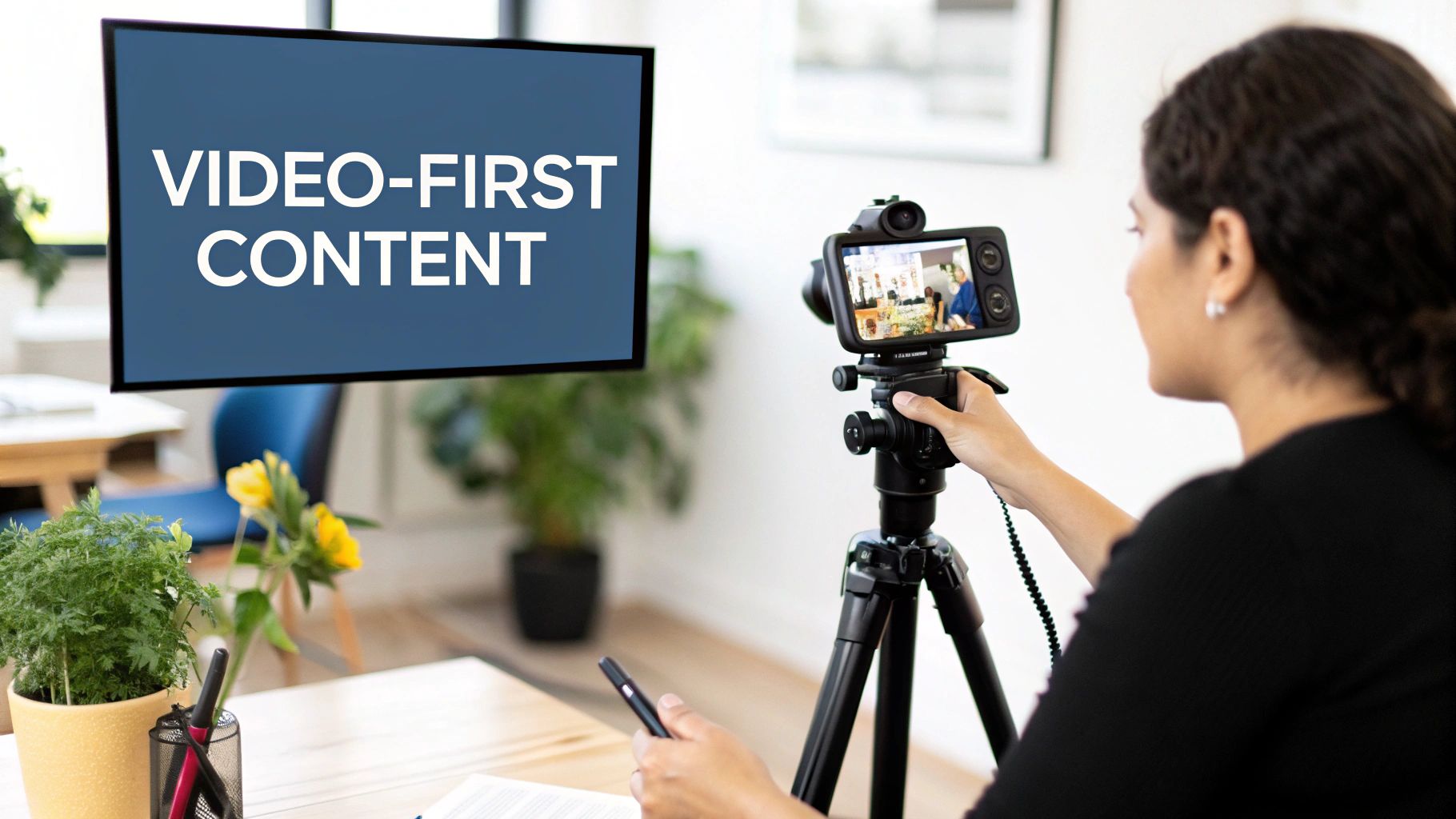
This strategy is effective because video captures attention faster and tells a more compelling story. For instance, Dollar Shave Club's viral launch video demonstrated its brand personality and value proposition perfectly, while Chipotle's TikTok campaigns have made it a Gen Z favorite. By leading with video, brands can build stronger emotional connections and communicate complex ideas more effectively. For more insights into using dynamic content, you can learn about leveraging video in your social media lead generation efforts on our blog.
How to Implement This Strategy
To succeed with a video-first approach, you must create content that is native to each platform and grabs attention immediately. Think mobile-first, with a focus on vertical formats and clear, concise messaging that works even without sound.
Here are actionable tips for getting started:
- Hook Viewers Instantly: Capture attention within the first three seconds using a compelling visual, a direct question, or a surprising statement.
- Design for Silent Viewing: Add captions or on-screen text, as studies show up to 85% of social media videos are watched without sound.
- Optimize for Vertical Format: Use a 9:16 aspect ratio for platforms like TikTok, Instagram Reels, and Shorts to fill the entire mobile screen.
- Include a Clear CTA: Tell viewers what to do next. Place your call-to-action early in the video and repeat it at the end for maximum impact.
- Repurpose and Remix: Turn one long-form video (like a webinar or interview) into dozens of short clips, testimonials, and shareable highlights to maximize your content's reach.
5. Micro-Targeting Through Audience Segmentation
Micro-targeting is a sophisticated social media advertising strategy that moves beyond broad, generic messaging. It involves dividing a large audience into smaller, highly specific segments based on demographics, interests, behaviors, and even custom data from your own CRM. This precision allows you to deliver personalized ad content that resonates deeply with each defined group, dramatically improving relevance and conversion rates.
This approach is powerful because it ensures your ad spend is concentrated on the users most likely to convert. For instance, Netflix hyper-personalizes its show thumbnails for different user segments based on their viewing history, while Sephora uses its Beauty Insider data to send targeted promotions to customers based on past purchases and brand affinities.
How to Implement This Strategy
Successful micro-targeting begins with data and a clear understanding of your ideal customer profiles. Instead of trying to create dozens of segments at once, start small and refine your approach based on performance. The goal is to make each segment feel like your ad was created just for them, boosting engagement and driving action.
Here are actionable tips for getting started:
- Leverage CRM Data: Create custom audiences by uploading your email lists or customer data directly into platforms like Facebook. This allows you to re-engage past customers or find new users similar to them.
- Build High-Value Lookalike Audiences: Instead of using your entire customer list, create lookalike audiences based on your top 1-5% of customers. This trains the algorithm to find new prospects who mirror your very best clients.
- Layer Targeting Criteria: Combine multiple targeting options for enhanced precision. For example, you could target users who are interested in "digital marketing," work in the "technology industry," and have recently engaged with business-related content.
- Use Exclusion Audiences: Prevent ad fatigue and wasted spend by excluding existing customers or recent converters from acquisition campaigns. Learn more about advanced targeting on Facebook for your business.
6. Social Commerce and Shoppable Posts
Social commerce is an integrated advertising strategy that transforms social media platforms into direct sales channels. By embedding shopping functionality directly into posts, Stories, and videos, it allows users to discover, view, and purchase products without ever leaving the app. This approach capitalizes on impulse buying behavior by dramatically reducing friction in the customer journey and creating a seamless mobile shopping experience.
This strategy is particularly effective because it meets customers where they are already spending their time, turning passive scrolling into an active shopping opportunity. For example, Zara and H&M leverage Instagram Shopping to sell directly from their feeds, while Walmart's TikTok live shopping events have generated millions in sales by combining entertainment with e-commerce.
How to Implement This Strategy
To succeed with social commerce, focus on creating a visually appealing and frictionless path to purchase. The key is to make buying feel like a natural extension of the content consumption experience, not an intrusive ad. This requires high-quality visuals and optimized product information that encourages immediate action.
Here are actionable tips for getting started:
- Use High-Quality Lifestyle Images: Showcase your products in context to help customers visualize how they fit into their own lives.
- Tag Multiple Products: Increase the potential for a higher average order value by tagging several complementary items in a single high-performing post or image.
- Leverage Live Shopping Events: Create urgency and boost sales by hosting live events with exclusive, time-sensitive deals and limited inventory announcements.
- Optimize for Mobile: Write concise, compelling product descriptions and ensure your product catalog images are clear and attractive on small screens.
7. Conversational Marketing via Chatbots and DMs
Conversational marketing is an interactive social media advertising strategy that uses automated chatbots and direct messaging to engage prospects in real-time. Instead of pushing users to an external website, this approach brings the sales conversation directly into messaging apps like Facebook Messenger or Instagram DMs. This provides instant responses, personalized recommendations, and immediate support that guides users through the buyer's journey conversationally.
This strategy works because it meets modern consumers where they are most comfortable: messaging apps. By providing instant, two-way communication, brands can answer questions, qualify leads, and even process orders without friction. For instance, Sephora's Messenger bot provides personalized beauty advice and books in-store appointments, while Domino's allows customers to order a pizza entirely within a chat conversation.
How to Implement This Strategy
Successful conversational marketing relies on well-designed conversation flows and a seamless handoff between automation and human support. The goal is to make the automated experience feel helpful and natural, not robotic. Start by mapping out common customer questions and creating clear decision trees to address them.
Here are actionable tips for getting started:
- Use Click-to-Messenger Ads: Launch social media ad campaigns with a "Send Message" call-to-action. This directly funnels interested users into an automated conversation, allowing you to capture leads instantly.
- Design Intuitive Conversation Flows: Keep initial automated messages brief and engaging. Ask clear questions to guide the user and use rich media like images, GIFs, or quick-reply buttons to maintain interest.
- Always Provide a Human Escape Hatch: Ensure users can easily request to speak with a live agent at any point in the conversation. This prevents frustration and provides a safety net for complex queries.
- Personalize the Interaction: Leverage user data from their social profile or past interactions to tailor responses. Addressing users by name or referencing their previous interest makes the conversation feel more personal and effective.
8. Social Listening and Real-Time Marketing
Social listening and real-time marketing is a highly agile social media advertising strategy that involves monitoring online conversations to capitalize on trending topics, cultural moments, or brand mentions. Instead of planning campaigns weeks in advance, brands use this approach to insert themselves into current discussions with timely, relevant, and often witty content. This strategy leverages the heightened attention around a trending event, showcasing brand personality and relevance.
This tactic is powerful because it makes a brand feel human and culturally aware, boosting engagement and viral potential. The classic example is Oreo’s "You can still dunk in the dark" tweet during the 2013 Super Bowl blackout, which became a viral sensation. Similarly, Wendy’s has built its entire brand personality around sassy, real-time Twitter responses to followers and competitors, turning social media into a key marketing channel.
How to Implement This Strategy
Success in real-time marketing depends on speed, relevance, and a clear understanding of your brand's voice. You must be prepared to act quickly while staying true to your brand identity. A streamlined approval process is non-negotiable, as trends can fade in a matter of hours.
Here are actionable tips for getting started:
- Establish Clear Brand Guidelines: Define what topics are on-limits and, more importantly, off-limits. Know when not to participate, especially during sensitive or polarizing events.
- Create a Streamlined Approval Process: To be effective, content must be created and approved within minutes, not days. Empower a small team to make quick decisions.
- Use Social Listening Tools: Platforms like Sprout Social, Hootsuite, or Brandwatch are essential for monitoring keywords, brand mentions, and emerging trends in real time.
- Prepare Adaptable Templates: Build a library of pre-approved visual and copy templates that can be quickly customized for different types of trending moments, like memes or holiday events.
9. Employee Advocacy Programs
An employee advocacy program is a social media advertising strategy that transforms your team into trusted brand ambassadors. It involves empowering employees to share approved company content, news, and updates on their personal social media profiles, tapping into their authentic voices and established professional networks. This approach leverages the high level of trust people place in recommendations from individuals they know over corporate brand messages.
This strategy amplifies your organic reach and credibility exponentially. When an employee shares content, it is often seen as more genuine and receives higher engagement than the same post from a company page. For example, Adobe’s Social Shift program empowers over 7,000 advocates, while Dell's program famously increased its share of voice by 2,000%, showcasing the immense potential of a motivated internal team.
How to Implement This Strategy
A successful employee advocacy program is built on trust, training, and tools, not mandates. The goal is to make it easy and rewarding for employees to participate, turning them into enthusiastic brand champions. Start small and focus on building a culture of sharing that feels natural and beneficial for everyone involved.
Here are actionable tips for getting started:
- Make Participation Voluntary: Never force employees to post. Instead, incentivize participation with recognition, rewards, or gamification to encourage genuine enthusiasm.
- Provide Shareable Content (and Freedom): Use platforms like Bambu or EveryoneSocial to create a library of pre-approved content, but always encourage employees to add their own personalized commentary.
- Offer Social Media Training: Boost employee confidence by providing training on social media best practices, personal branding on platforms like LinkedIn, and company guidelines.
- Recognize Top Advocates: Publicly celebrate employees who actively participate and generate significant engagement. This fosters healthy competition and shows appreciation.
10. Performance-Based Testing and Optimization
Performance-based testing is a data-driven social media advertising strategy that rejects assumptions in favor of continuous experimentation. Instead of relying on guesswork, this approach systematically tests every variable of a campaign, including creative, copy, audiences, and calls-to-action (CTAs), to identify winning combinations backed by hard data. It's about making small, iterative changes to progressively improve performance and maximize return on investment (ROI).
This methodical strategy is the secret behind many high-growth companies. For instance, HubSpot famously increased lead generation by testing subtle headline variations, while Amazon’s culture of constant A/B testing on product pages is legendary. The core principle is that evidence, not opinion, should guide your advertising decisions, leading to more efficient ad spend and higher conversion rates. Ultimately, the performance of your ads is just one piece of the puzzle; for a holistic approach, you should also implement effective strategies to improve website conversion rates to optimize the post-click experience.
How to Implement This Strategy
Successful optimization requires a structured and disciplined approach to testing. The goal is to isolate variables, run controlled experiments, and use the results to inform future campaigns. Platforms like Facebook Ads even have built-in split testing tools to simplify the process.
Here are actionable tips for getting started:
- Test One Variable at a Time: To get clear insights, change only one element per test, such as the headline, image, or CTA button. This helps you attribute performance changes accurately.
- Ensure Statistical Significance: Run your tests long enough to gather sufficient data and reach at least a 95% confidence level. Making decisions based on small sample sizes can be misleading.
- Start with High-Impact Elements: Begin by testing the most influential parts of your ad, like the primary image or video and the main headline, as these often produce the biggest performance shifts.
- Document Everything: Maintain a log of every test you run, including your hypothesis, the variable tested, the results, and key takeaways. This builds an invaluable knowledge base for your team. You can learn more about measuring campaign effectiveness here.
Social Media Advertising Strategies: 10-Point Comparison
| Strategy | Implementation Complexity 🔄 | Resource Requirements ⚡ | Expected Outcomes 📊 | Ideal Use Cases 💡 | Key Advantages ⭐ |
|---|---|---|---|---|---|
| Influencer Marketing Campaigns | Medium to High (partner vetting, relationship mgmt) 🔄🔄 | Variable budget from low to very high ⚡⚡ | Builds trust, high engagement, authentic content 📊⭐ | Brand awareness, targeted niche markets, lifestyle products 💡 | Trusted third-party validation, authentic storytelling ⭐ |
| Retargeting and Remarketing | Medium (pixel setup, audience segmentation) 🔄 | Moderate (platform tools, ad spend) ⚡ | Higher conversion rates (2-3x), lower CPA 📊 | E-commerce, cart abandonment, warm leads 💡 | Highly targeted ads, cost-effective conversion boost ⭐ |
| User-Generated Content Campaigns | Medium (content curation, rights mgmt) 🔄 | Low to Medium (incentives, moderation) ⚡⚡ | Increased engagement, lower content costs 📊 | Consumer brands, community building, social proof 💡 | Authentic content, continuous content stream ⭐ |
| Video-First Content Strategy | High (production, editing, platform optimization) 🔄🔄🔄 | High (video equipment, editing tools) ⚡⚡ | Massive engagement lift (12x), enhanced storytelling 📊⭐ | All industries leveraging social media video 💡 | Superior engagement and retention, multiple repurposing ⭐ |
| Micro-Targeting Through Segmentation | High (data management, platform usage) 🔄🔄🔄 | High (data platforms, analytics) ⚡⚡ | Improved relevance and conversion rates (3-5x CTR) 📊 | B2B, e-commerce, personalized offers 💡 | Precise targeting, reduced ad waste, better ROI ⭐ |
| Social Commerce & Shoppable Posts | Medium (catalog setup, platform integration) 🔄🔄 | Medium (inventory, platform fees) ⚡ | Higher conversion rates (up to 30%) 📊 | Fashion, beauty, consumer goods with visual appeal 💡 | Seamless purchase flow, impulse buying capture ⭐ |
| Conversational Marketing (Chatbots & DMs) | High (chatflow design, AI integration) 🔄🔄🔄 | Medium to High (bot platforms, CRM integration) ⚡⚡ | Instant engagement, high open rates (70-80%) 📊 | Customer service, lead qualification, direct sales 💡 | Real-time interaction, scalable personalization ⭐ |
| Social Listening & Real-Time Marketing | Very High (24/7 monitoring, rapid content creation) 🔄🔄🔄 | Medium (monitoring tools, content team) ⚡ | High viral potential, brand personality boost 📊 | Brands aiming for cultural relevance & responsiveness 💡 | Organic reach growth, crisis management ⭐ |
| Employee Advocacy Programs | Medium (content curation, training) 🔄🔄 | Low to Medium (platforms, incentives) ⚡⚡ | Expanded organic reach (8x engagement) 📊 | B2B, professional services, recruitment 💡 | Authentic amplification, employee engagement ⭐ |
| Performance-Based Testing & Optimization | High (setup, analysis, iterative testing) 🔄🔄🔄 | Medium to High (analytics tools, budget) ⚡⚡ | Continuous performance improvement, data-driven ROI 📊 | All campaign types, data-driven marketing 💡 | Removes guesswork, maximizes ROI ⭐ |
From Strategy to Action: Your Next Move
The digital landscape is crowded, but a well-executed plan can cut through the noise. We've explored ten powerful social media advertising strategies, moving from the human connection of influencer and user-generated content campaigns to the data-driven precision of retargeting and micro-segmentation. Each approach, whether it's the immediacy of video-first content or the authenticity of employee advocacy, offers a unique lever to pull in your pursuit of growth.
The common thread weaving through all these tactics is the goal: to create a genuine connection that prompts a specific action. You're not just buying impressions; you're building relationships, solving problems, and guiding potential customers along their journey. The most effective advertisers understand that success isn't about mastering a single strategy but about building an agile, responsive system that can adapt to changing audience behaviors and platform algorithms.
Key Takeaways for Immediate Impact
To translate these ideas into measurable results, focus on these core principles:
- Authenticity Over Polish: Modern consumers crave realness. Strategies like UGC campaigns, influencer collaborations, and employee advocacy resonate because they feel more genuine and trustworthy than a slick corporate ad.
- Data is Your Compass: Don't guess, know. Micro-targeting, A/B testing, and social listening provide the critical data you need to understand who your audience is, what they want, and how to speak their language.
- Reduce Friction, Increase Conversion: Make it easy for people to buy. Social commerce, shoppable posts, and conversational marketing remove barriers, allowing for seamless transitions from discovery to purchase right within the social platform.
- The Follow-Up is Everything: Generating a lead is only the first step. The speed and quality of your follow-up are what ultimately determine whether that lead converts into a customer. A brilliant campaign with a slow response system is a wasted investment.
Your Path Forward: From Insights to Implementation
Mastering these social media advertising strategies is an ongoing process of testing, learning, and optimizing. Don't feel overwhelmed by the need to implement all ten at once. Instead, choose one or two that align most closely with your current business goals and audience. Are you focused on building brand trust? Start with a UGC campaign. Need to recover abandoned carts? Double down on your retargeting efforts.
The true power of these strategies is unlocked when they work together, creating a comprehensive advertising ecosystem that nurtures leads at every stage. But no matter how sophisticated your targeting or compelling your creative, your ROI hinges on what happens after the click. A seamless lead management process is the final, crucial piece of the puzzle, ensuring that the interest you generate is never lost to manual friction or delayed follow-up.
The most effective social media advertising strategies generate high-quality leads, but their value disappears without swift action. LeadSavvy Pro closes the gap by instantly syncing your Facebook Lead Ads directly to your CRM or Google Sheets, eliminating manual downloads and delays. Supercharge your response time and convert more leads by visiting LeadSavvy Pro to start your free plan today.



